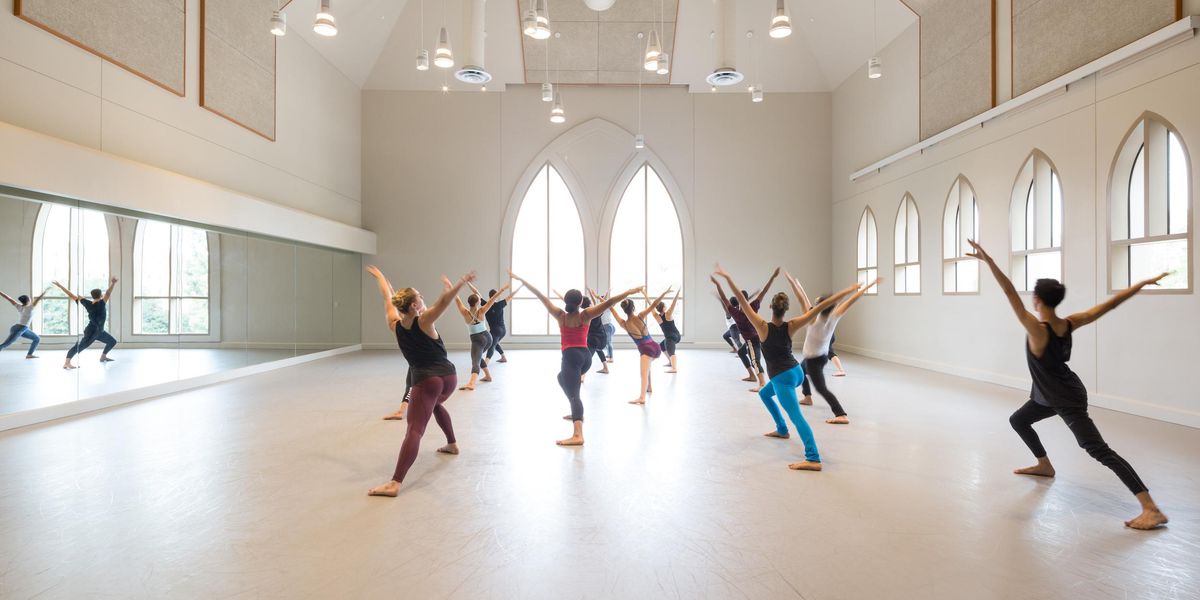Choreographing Cyberspace
Danny Mefford dives into teen angst and social media for Dear Evan Hansen.
In Dear Evan Hansen, a high-school misfit becomes an internet sensation. PC Matthew Murphy, Courtesy DKC/O&M
“What would Pina Bausch do?” Not too many Broadway choreographers would ask themselves this question while working in the studio on a new show. But for Danny Mefford, who created the rock-driven dance in Bloody Bloody Andrew Jackson, the story-driven choreography for Fun Home and the character-driven movement of the new musical Dear Evan Hansen, it comes as naturally as moving.
Dear Evan Hansen, having its Broadway opening this month at the Music Box Theatre after its successful run off-Broadway last spring, tells the story of a high-school misfit who inadvertently becomes an internet sensation when a letter he has written goes viral. Composed by Benj Pasek and Justin Paul, the show doesn’t boast a conventional dance ensemble, or conventional dance steps—Evan is much too anxious and klutzy to boogie down. But he has his own tormented, idiosyncratic way of moving—originated, Mefford says, mostly by Ben Platt, the Pitch Perfect star who has been playing the role since the show had its first production at the Arena Stage in Washington, DC.
Still,
Evan Hansen is extensively choreographed, with a heightened naturalism in the scenes that take place in Evan’s day-to-day reality, and with a more stylized physicality that takes over when the show enters cyberspace, which it does often. Mefford, who has frequently choreographed for actors, says what inspires him about Bausch is “that she doesn’t choose people who look alike. Her dancers are great actors with their bodies, and when they act, they really tell stories.”
Mefford, 34, is that rare thing, a Broadway choreographer with no Broadway credits as a dancer. “I became a choreographer by happenstance,” he says. Growing up in Floyds Knobs, Indiana, not far from Louisville, Kentucky, he did the high-school musical thing. The choreographer for Crazy for You, 42nd Street and the other shows he performed in was Bette Weber Flock, who ran a local dance school. “She was a wonderful, MGM-golden-years kind of choreographer,” he recalls. And when he started attending her Saturday-morning dance classes—the only dance training he’s ever received, he notes—she took him aside one day and urged him not to quit. “You have a gift,” she told him.
He perhaps inherited it from his mother, a nurse whose childhood dream was to be a dancer. “When my parents first married,” Mefford says, “she would use the full length of the trailer they lived in to practice leaping.” Her son excelled in gymnastics and other physical pursuits, but dancing was different. Mefford says he sensed that he was getting more out of it, and bringing more to it, than the others in Flock’s classes. “There was something about the rhythm, and feeling the music, that I intrinsically understood,” he says. When Flock recognized it too, “it was a real turning point,” he remembers. “It meant so much to me. I felt like an outsider in so many ways.”
At the University of Evansville, in Indiana, he studied theater performance and international politics, figuring that he’d move to New York and get work either as an actor or at the United Nations. Instead, he moved to Rhode Island and earned an MFA in acting in the Brown University/Trinity Rep program. There, he took classes with Stephen Buescher, a commedia dell’arte expert who had his own company and a strong sense of how movement can express character and drive narrative.
In the summer of 2006, interning at the Williamstown Theatre Festival in Massachusetts, he met Alex Timbers. The rest, of course, is history—Timbers needed a choreographer for a little musical he was workshopping, and four years later, when
Bloody Bloody Andrew Jackson moved to Broadway, Mefford moved with it into the ranks of Broadway choreographers, and garnered an Astaire Award nomination. The Bridges of Madison County and Fun Home soon followed, and though choreographing was never a goal, he says, “I feel like I’m doing what I was meant to do.”
Michael Greif, the director of
Evan Hansen, invited Mefford to interview for the choreography slot. They agreed from the outset that a musical that delves so deeply and darkly into teenage angst “could not get big and MGM-y…Dear Evan Hansen is a particular challenge, because it deals with real people in the world, and you want to believe they are who they are.” None of them are dancers, and to keep the audience focused on the characters and the narrative, Mefford says, “the physical ideas are more heightened movement than dance. It needs to feel like the choreographer was never there, and you’re watching people just live on the stage.”




